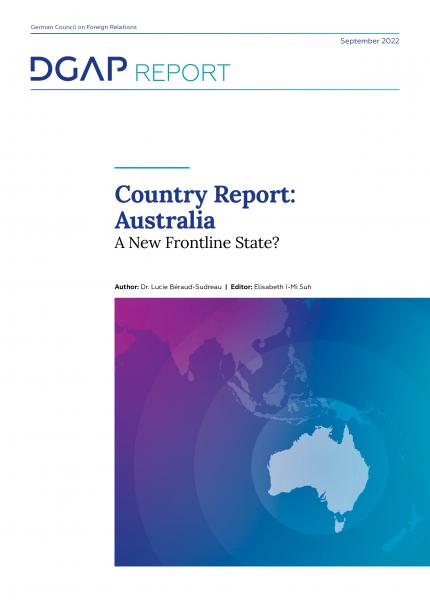Please note: below you find the executive summary of the report. For the full report, including footnotes and graphics, please download the pdf here.
Until 2016, Australian defense policy had followed a back-and-forth evolution, similar to the European experience, between territorial defense and expeditionary operations. As in Europe, Australia’s defense policy was shaped by the fact that the country was under the protection of the United States. In exchange, as alliance politics dictate, it acted as a reliable junior partner in US-led coalitions and military endeavors. Over the last six years, however, Australia gradually moved from a world where the main threats appeared to be non-state actors to a security environment in which state-to-state conflicts and major wars seem more likely. Like Europe, Australia therefore renewed its focus on territorial defense – only that it is looking at China instead of Russia.
The shift in strategic thinking and related acceleration of military modernization culminated in the AUKUS announcement of September 2021: Australia declared that it was entering into a new security agreement with the United States and the United Kingdom to obtain nuclear-powered submarines and to cooperate on defense technology in other domains as well, such as hypersonics and military applications of quantum technology. The new Labor government elected in May 2022 supports the AUKUS announcement. Although during the election campaign, Labor was accused by its opponents of being ‘soft‘ on China, the overall trajectory for the Australian Defence Force is not expected to change. This has been confirmed during the new governments’ first weeks in power of the new government.
This report leads to three main conclusions: First, Australia’s defense build-up should not in itself be viewed as a factor of destabilization in the region. Seen from Canberra, the defense policy shift is a response to China’s military modernization. Australia’s ongoing major procurement programs, including AUKUS, are aimed at building a sufficiently credible deterrence to prevent other parties in the region from undertaking military action. This approach, however, does require good diplomatic communication with Australia’s neighbors as there is a risk that Australia’s defense policy shift could contribute to a security dilemma in the region and feed into the threat perceptions of other regional powers.
Second, the 2020 Defence Strategic Update recenters Australia’s strategic interests on its neighborhood. It encompasses maritime Southeast Asia and expresses concerns about the militarization of the South China Sea, but does not mention Taiwan. At the same time, the AUKUS announcement further strengthens Australia’s alliance with the United States, which enhances Australia’s security but is also likely to come with even deeper alliance obligations. These would probably include contributing to a potential Taiwan contingency, should mainland China invade and the United States intervene. However, this remains speculative given that any scenario will depend on the conditions of an invasion and on reactions from other US allies, above all Japan.
Third, the latest developments in Australia’s defense policy should remind Europeans that the United States is indisputably Australia’s most important ally, followed by Japan. Nonetheless, Australia remains a key like-minded partner for Germany and Europe in the Indo-Pacific. Australia shares the same values and interests in maintaining the international rules-based order.
The report concludes on recommendations, including intensifying the Europe-Australian dialogue on conventional deterrence against coercive great powers. Both Europe and Australia are facing an important challenge in their respective regions, with Europe currently learning a painful lesson vis-à-vis Russia. The discussion on conventional deterrence should cover three main aspects which correspond to three stages of conflict outbreak scenarios: (i) Think about how to operationalize deterrence and conflict prevention in the Indo-Pacific; (ii) Reflect on the triggers for conflict in the context of China’s threshold warfare activities; (iii) Anticipate on how to react in cooperation in case of conflict outbreak. The discussions and any follow-on implementation would likely involve diplomats and militaries, or both, and could take place to some extent within the framework of the existing NATO-Australia partnership.
ABOUT THE PROJECT
The DGAP’s project on “Risk Reduction and Arms Control in the Asia-Pacific Region” aims to provide a comprehensive analysis of the security dynamics in the In-do-Pacific and East Asia, with a focus on important players including Australia, China, Japan, North Korea, Russia, South Korea, Taiwan, and the United States. The objective is to foster understanding in Germany and Europe of the risk of conflict in the Asia-Pacific and suggest possible steps to mitigate this risk and safeguard stability in and beyond the region. The project starts with taking stock of security developments in the Asia-Pacific. As part of a series, the following report provides a detailed review of Japan’s security and defense policies and partnerships in the current geopolitical context. It concludes with a list of policy recommendations to stakeholders and policymakers.
DISCLAIMER
This report does not contain new empirical findings but assesses primary documents and compiles existing studies, primarily from expert sources. It is tailored for a European audience.



